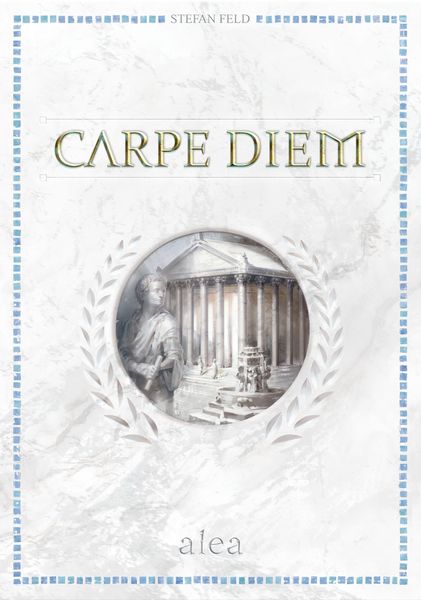Carpe Diem (2018) Board Game
Carpe Diem, released in 2018, is a board game designed by Stefan Feld and published by alea. Set in ancient Rome, players take on the role of patricians trying to build the most prosperous city district. The game incorporates elements of area movement, contracts, end game bonuses, open drafting, and tile placement to create a strategic and engaging gameplay experience.
Game Components of Carpe Diem
How To Setup Carpe Diem
To set up Carpe Diem, each player receives a personal city district board with randomly distributed frame pieces that indicate bonuses for specific buildings. The main game board is placed in the center, featuring a city building section for tile selection, a scoring section with laid-out scoring cards, and a banderole track to determine turn order and scoring. Players start with some points on the banderole track and place their meeple on a starting space. Each player also receives starting victory point cards and a pawn to navigate the tile depots.
Gameplay Mechanics and Game Objective
Player Experience
Carpe Diem offers a complex yet engaging experience, with players acting as Roman patricians building and improving their city districts. The game involves strategic tile placement, resource management, and careful planning to maximize scoring opportunities. While the game mechanics are straightforward, the variable scoring system and the need to adapt to changing tile availability add depth and replayability.
Pros
Cons
Personal Thoughts on Carpe Diem
Carpe Diem is ideal for fans of eurogames and tile-laying mechanics, particularly those who enjoy the works of Stefan Feld. It rewards strategic thinking and planning, making it a great fit for veteran gamers. However, it may not be the best choice for those seeking high levels of player interaction or a more thematic experience. The game’s complexity and variable scoring system make it a game that improves with multiple plays, offering a challenging and intellectually stimulating experience.
We are supported by our audience. When you purchase through links on our site, we may earn an affiliate commission, at no extra cost for you. Learn more.

